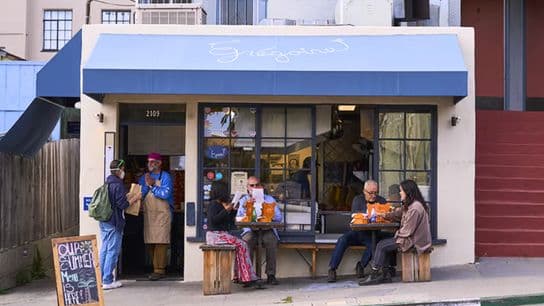NLRB’s Joint Employment Decision: What Franchisees Need To Know
The National Labor Relations Board’s decision on the issue of Joint Employment continues to send ripples across the franchising space. Here’s what you need to know.
Perhaps the most intimidating part of becoming a franchisee as a novice entrepreneur is sifting through the legal jargon. Potential franchisees should hire a lawyer to help them navigate the dense, wordy franchise agreement and the legal norms of their industry at large, but some legal issues remain unsettled.
Perhaps the biggest example of one such issue is the Joint Employment decision by the National Labor Relations Board (NLRB). Here is everything franchisors and franchisees need to know about the legal issue.
What is Joint Employment?
Joint employment is when more than one entity is a worker's employer, which is a primary feature of franchising. In 2015, the NLRB decided to broaden the interpretation of joint-employer status, resulting in a threat to the franchised business model's mode of employment. Basically, the ruling meant that companies (franchisors) could be held responsible for labor violations committed by their contractors (franchisees). After the NLRB expanded the joint employer definition, joint employer lawsuits increased 93% and cost individual franchise businesses an average of $42,000, according to the International Franchise Association. In fact, many foodservice franchisors considered cutting back on or halting franchising entirely to avoid this increased liability. This issue impacts both franchisors and franchisees from a hiring and potentially a financing standpoint.
How Does It Relate To Franchising?
Most franchise systems grant that franchisees, while having to comply with certain system standards, are independent businesses charged with the responsibility for the day-to-day operation of their own businesses. That independence is important for both franchisor and franchisee — the franchisor is often able to use the independence to avoid liability for claims arising out of the operation by the franchisee of its business, and the franchisee counts on that independence for things like qualifying for loan guarantees from the Small Business Administration.
With the NLRB’s changes in the perceived relationship between franchisee and franchisor, franchise brands would be responsible for issues directly related to the local franchisee. This disrupts the core foundation of franchising.
Since employees are the foundation of most businesses, maintaining a certain distance between franchisor and franchisee on the matter of the franchisee’s employees (hiring, firing, and other terms of employment) ensures the franchisee’s independence.
In February, the National Labor Relations Board (NLRB) published a rule updating its joint-employer regulations. According to the new ruling, franchisees could be considered a joint employer of an operator's employees only if the franchisee maintained “substantial control” over the workers' essential terms of employment. The NLRB defined these essential terms exclusively as “wages, benefits, hours of work, hiring, discharge, discipline, supervision and direction.”
This meant that franchisees could continue to oversee the responsibility of recruiting and maintaining a staff, instead of having to involve a franchisor that might have no familiarity with the local labor market. Still, many worried these updates could be discouraging to labor groups that have tried to hold corporate restaurants accountable for the bad actions of their franchisees.
This summer, the U.S. District Court Judge Gregory Woods overturned the NLRB redefinition of Joint Employer, saying Labor failed to explain adequately why its interpretation of “joint employer” changed.
Should a Franchisor Be Afraid of Being Labeled a Joint Employer?
According to Jonathan Barber, Esq., Managing Attorney at Franchise.Law, this overturning of the redefinition, while inconvenient, won’t really change much. “It was nice for the NLRB to clarify its definition of a joint employer, however, the real test is whether a franchisor has too much involvement in its franchisees' human resource practices,” he said. “If a franchisor prescribes a minimum number of employees and basic qualifications for them, they shouldn't be afraid of being labeled a joint employer.”
However, Barber notes that if a franchisor itself interviews each of its franchisees' prospective employees, conducts background checks, trains the employees and otherwise participates in the overall management of those employees, they'll most likely be found to be a joint employer.
How Can a Franchisor Avoid Joint Employer Status?
“The best practice is for franchisors to give minimum staffing guidelines and to let their franchisees handle all of their employment needs,” Barber said.
Luckily, the recent NLRB ruling doesn’t necessarily spell disaster for franchisors or franchisees. “Woods’ decision basically challenges whether the NLRB properly implemented its new definition of a joint employer,” said Barber. “It doesn't set a new standard, holding that all franchisors are joint employers simply by virtue of their franchise relationship. That would be catastrophic.”
The back-and-forth of the NLRB ruling is a prime example of why it is so important for franchisees to understand all of their rights and obligations before signing on the dotted line. Whether it be an attorney, a broker or even an established franchise owner, reaching out to experts and asking about obligations is an important step in the due diligence process.









